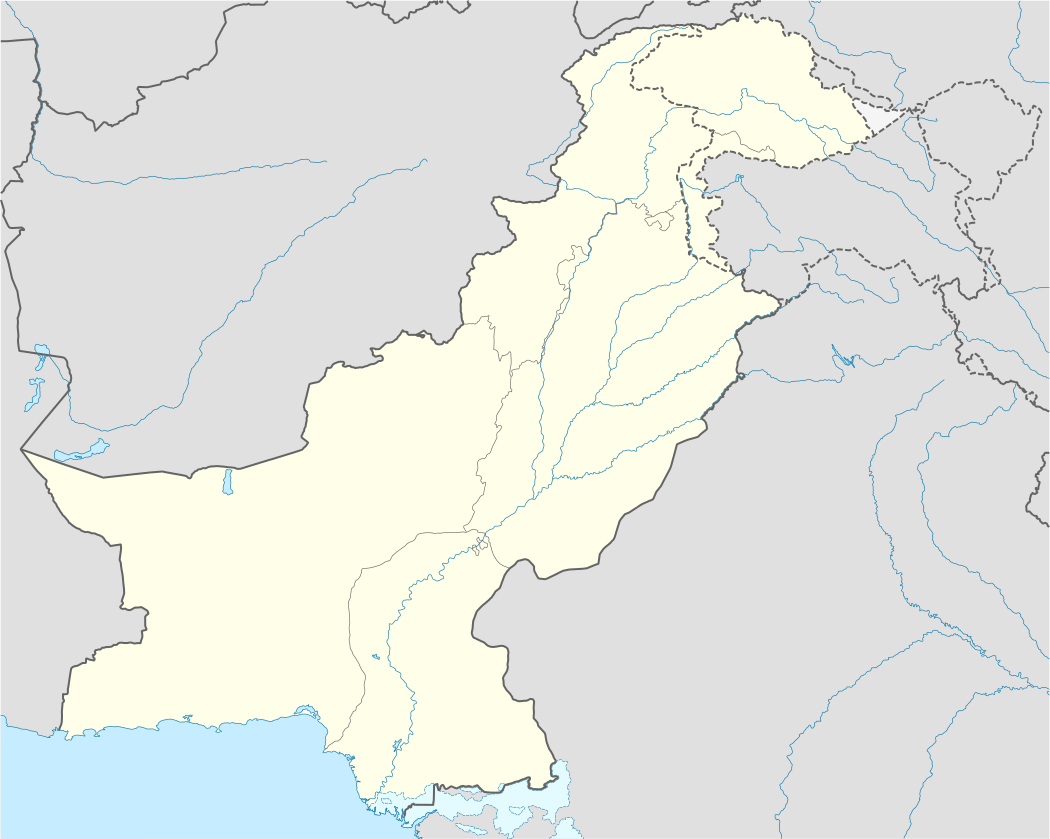Thali dialect
Thaḷī is a Lahnda dialect spoken in parts of the Pakistani provinces of Punjab and Khyber Pakhtunkhwa. It has a widespread area, starting from Tank to Muzzafargarh on eastern end of Indus River and from Bannu runs down to D I khan at western end of Indus River. It is classified as a northern dialect of Saraiki,[2][3] although it has also been described as transitional between Shahpuri and the central Saraiki Multani dialect.[4] Its name is derived from the Thal Desert.[4]
| Thali dialect | |
|---|---|
| Native to | Pakistan |
| Language codes | |
| ISO 639-3 | – |
| Glottolog | thal1241[1] |
 Thali dialect | |
| Coordinates: 31°N 71°E | |
It is one of several Saraiki dialects that are commonly known as Jaṭkī.[5] It is spoken in Khushab District and parts of the former Shahpur District where it is known as Thaḷī.[6] Its local name in Jhang District is Thaḷochṛī.[7] In Dera Ismail Khan District it goes by the name of Ḍerāwāl[8] or Derawali,[4] and in Mianwali and Bannu districts it is known as Hindko or Mulkī.[4] A dialect of Thali spoken in the northeast is known as Kacchī.[9] Inhabitants of Dera Ismail Khan District, presumably speakers of this dialect, variously identify their language as Saraiki or Hindko.[10] Likewise for those living in Mianwali District, who identify their language as either Punjabi or Saraiki.[11]
Thali is spoken in the following districts of Punjab Province and districts of Kyber Pakhtunkha Province:
References
- Hammarström, Harald; Forkel, Robert; Haspelmath, Martin, eds. (2017). "Thali". Glottolog 3.0. Jena, Germany: Max Planck Institute for the Science of Human History.
- Wagha 1997, pp. 229–31.
- Shackle 1976, p. 8.
- Singh 1970, p. 142.
- Use of the term Jatki: Singh 1970 (for Thali), Masica 1991, p. 430 (for other Saraiki varieties).
- Grierson 1919, p. 381. The description here mentions Jhelum, rather than Khushab, but the current Khushab District occupies the parts of the erstwhile Jhelum District that are under discussion.
- Grierson 1919, p. 381.
- Masica 1991, p. 426.
- Bahri 1963, pp. 16–17.
- Rensch 1992, pp. 7–8, 57.
- South Asia Partnership-Pakistan. Profile of district Mianwali (PDF). pp. 12–13. Archived from the original (PDF) on 22 May 2013.
Bibliography
- Bahri, Hardev (1963). Lahndi Phonetics : with special reference to Awáṇkárí. Allahabad: Bharati Press.CS1 maint: ref=harv (link)
- Grierson, George A. (1919). "Thali". Linguistic Survey of India. Volume VIII , Part 1, Indo-Aryan family. North-western group. Specimens of Sindhī and Lahndā. Calcutta: Office of the Superintendent of Government Printing, India.CS1 maint: ref=harv (link)
- Masica, Colin P. (1991). The Indo-Aryan languages. Cambridge language surveys. Cambridge University Press. ISBN 978-0-521-23420-7.CS1 maint: ref=harv (link)
- Rensch, Calvin R. (1992). "The Language Environment of Hindko-Speaking People". In O'Leary, Clare F.; Rensch, Calvin R.; Hallberg, Calinda E. (eds.). Hindko and Gujari. Sociolinguistic Survey of Northern Pakistan. Islamabad: National Institute of Pakistan Studies, Quaid-i-Azam University and Summer Institute of Linguistics. ISBN 969-8023-13-5.CS1 maint: ref=harv (link)
- Shackle, Christopher (1976). The Siraiki language of central Pakistan : a reference grammar. London: School of Oriental and African Studies.CS1 maint: ref=harv (link)
- Singh, Atam (1970). "An introduction to the dialects of Punjabi". Pākhā sanjam. 3 (1). ISSN 0556-4417.CS1 maint: ref=harv (link) The account of Thali here is based entirely on Grierson's Linguistic Survey of India.
- Wagha, Muhammad Ahsan (1997). The development of Siraiki language in Pakistan (Ph.D.). School of Oriental and African Studies.CS1 maint: ref=harv (link) (requires registration).